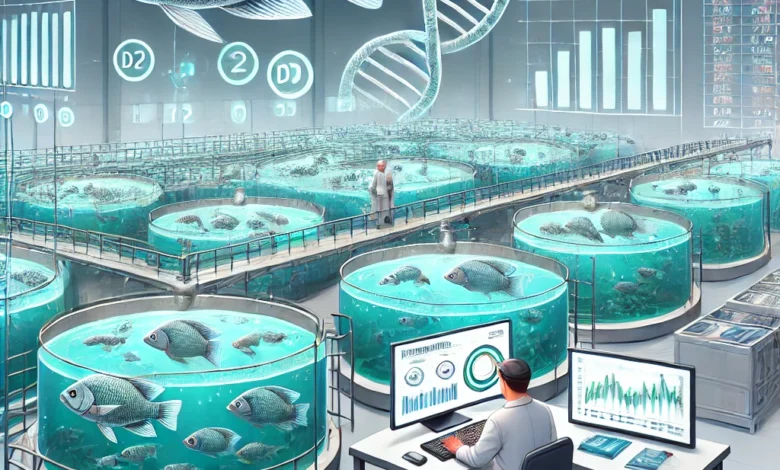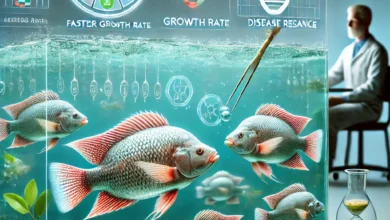Strategies for Genetic Breeding of Tilapia
Q and A | Strategies for Genetic Breeding of Tilapia
Q and A | Strategies for Genetic Breeding of Tilapia
What are the key strategies for genetic breeding in tilapia?
Key strategies include selective breeding, hybridization, and using advanced tools like genomic selection and CRISPR. These strategies focus on enhancing traits like faster growth, disease resistance, and improved reproduction. By using these techniques, breeders can produce high-quality tilapia that grows quickly, requires less feed, and has better market value, which ultimately improves the efficiency and sustainability of aquaculture operations.
How does selective breeding work in tilapia?
Selective breeding involves choosing tilapia with desirable traits, such as rapid growth or disease resistance, to reproduce. The offspring are monitored to ensure they inherit these advantageous traits. This method has been used for decades and has proven to be effective in improving the performance and market value of tilapia, making it one of the most popular strategies in genetic breeding.
What is hybridization in the context of tilapia breeding?
Hybridization is the process of crossing different species or strains of tilapia to produce offspring with a combination of beneficial traits. For example, crossing fast-growing strains with disease-resistant strains can lead to superior hybrid tilapia. This approach is used to combine the best traits from different genetic backgrounds, leading to stronger and more adaptable tilapia populations that can thrive in various environments.
How does genomic selection benefit tilapia breeding?
Genomic selection uses DNA markers to predict the genetic potential of fish at an early stage. By analyzing the fish’s genome, breeders can make more informed decisions about which individuals to select for breeding. This results in faster genetic gains, as breeders don’t have to wait for the fish to grow to adulthood to evaluate their performance, thus accelerating the breeding process and improving productivity.
What role does CRISPR play in tilapia breeding?
CRISPR is a gene-editing tool that allows for precise modifications to the tilapia genome. It can be used to remove undesirable genes or insert beneficial ones, like genes for disease resistance or faster growth. While still a relatively new technology in aquaculture, CRISPR has the potential to revolutionize tilapia breeding by enabling the creation of highly optimized fish populations for commercial production.
What challenges do genetic breeding programs for tilapia face?
Challenges include maintaining genetic diversity, the cost of implementing advanced technologies, and potential ethical concerns over genetic modification. Balancing genetic improvement with biodiversity conservation is also crucial. Despite these challenges, the benefits of genetic breeding, such as increased production efficiency and better fish quality, often outweigh the difficulties, especially when combined with proper management strategies.
How do environmental factors affect genetic breeding outcomes?
Environmental factors like water quality, temperature, and feeding practices play a significant role in the success of genetic breeding programs. Even fish with superior genetics will underperform in suboptimal conditions. Thus, proper management of the aquaculture environment is essential to maximize the potential of genetically improved tilapia and ensure high yields and healthy populations.
What are the economic advantages of using genetic breeding in tilapia farming?
Genetic breeding leads to faster-growing, more disease-resistant tilapia, which lowers production costs and increases profits for farmers. Additionally, these fish can command higher prices in the market due to their superior quality. By reducing the need for medications and improving feed efficiency, genetic breeding can significantly enhance the economic viability of tilapia farming, making it more competitive and sustainable.
How can farmers implement genetic breeding in their tilapia farms?
Farmers can start by selecting high-quality broodstock with desirable traits and gradually incorporating advanced technologies like genomic selection or hybridization. Proper record-keeping and performance monitoring are also crucial. Collaboration with research institutions or breeders who specialize in genetic improvement can help farmers access better strains and improve their overall production.
What is the future of genetic breeding in tilapia farming?
The future of genetic breeding in tilapia is promising, with ongoing advancements in CRISPR, genomics, and bioinformatics. These technologies will enable more precise and efficient breeding, leading to even higher yields and better fish quality. As technology becomes more accessible, genetic breeding will likely become the norm in tilapia farming, driving the industry’s growth and sustainability.



